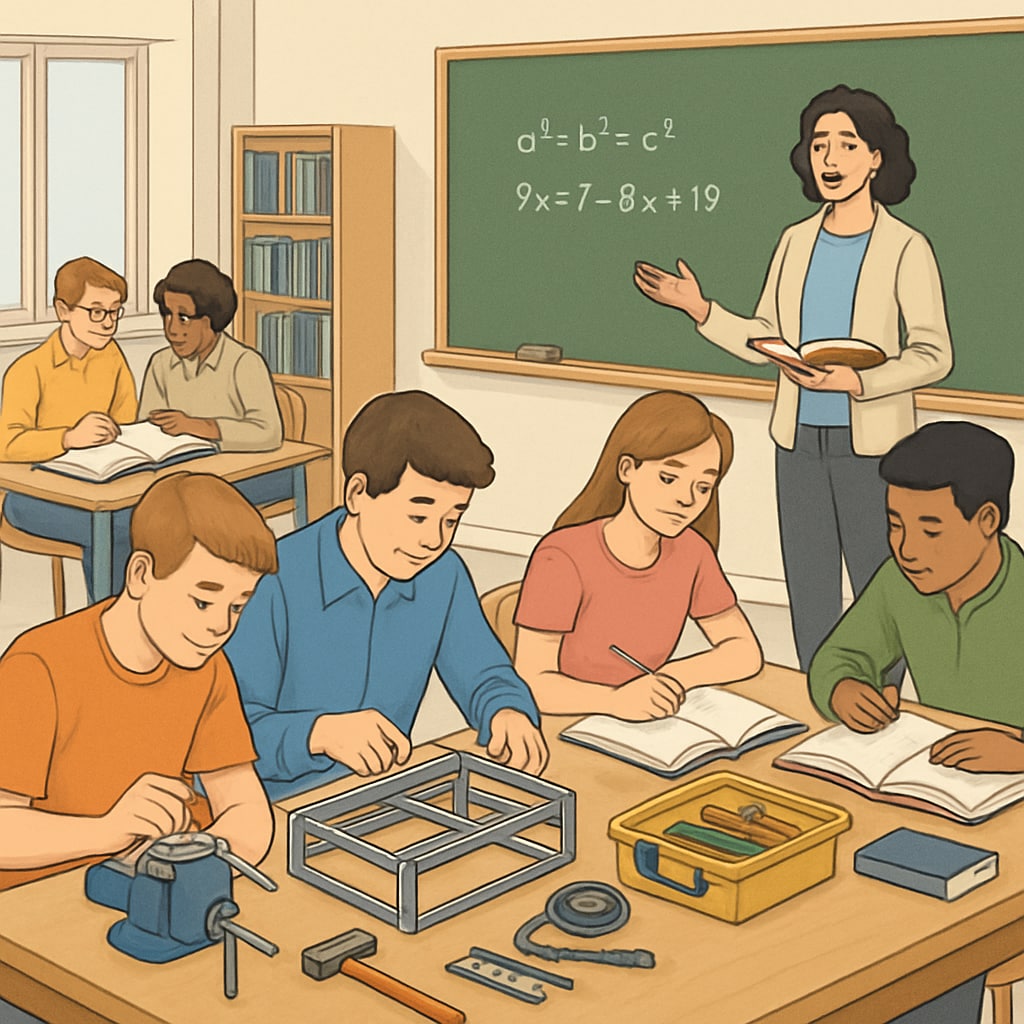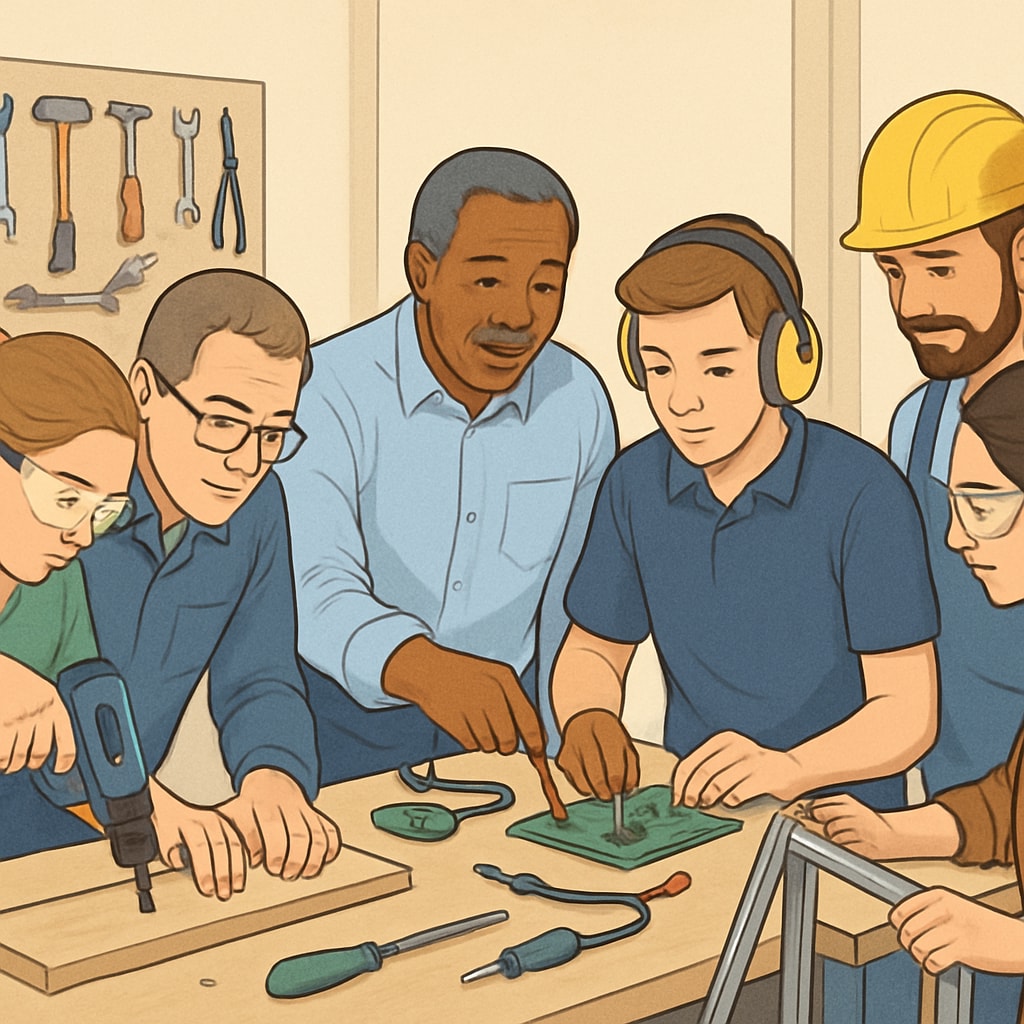In today’s rapidly evolving educational landscape, achieving a balance between vocational education, academic balance, and educational structures is a pressing challenge for schools. K12 education is tasked with equipping students with both practical skills for career readiness and a strong foundation in traditional academic subjects. This dual focus requires innovative strategies to integrate these distinct yet complementary domains into a cohesive educational model.

Why Balance Between Vocational and Traditional Education Matters
Vocational education focuses on preparing students with hands-on, job-specific skills, while traditional academics build critical thinking, theoretical knowledge, and intellectual growth. Both are essential in today’s world where employers increasingly value well-rounded individuals capable of both practical application and analytical reasoning.
For example, a student learning programming in a vocational setting can benefit from mathematics and problem-solving skills taught in traditional academic courses. Conversely, a history or literature student may gain employable skills by engaging in career-focused activities like public speaking or project management.
- Vocational Education: Addresses workforce demands, providing students with technical and practical skills.
- Traditional Academics: Develops foundational knowledge, critical thinking, and communication abilities.
- Integration: Combines both approaches to foster holistic development and adaptability.
As a result, striking a balance is not just a theoretical priority but a practical necessity for modern education.
Strategies for Integrating Vocational and Academic Curricula
Several educational districts have implemented innovative strategies to harmonize vocational and traditional learning. Below are some actionable methods for schools looking to achieve this balance:
- Project-Based Learning (PBL): Schools can design interdisciplinary projects that require students to apply skills from both vocational training and traditional subjects. For instance, a project on renewable energy can combine physics, engineering, and technical design.
- Flexible Timetables: Allow students to split their time between academic courses and vocational training programs.
- Industry Partnerships: Collaborating with local industries to provide internships or apprenticeships that align with academic and vocational goals.
- Teacher Collaboration: Encourage vocational and academic teachers to co-develop courses, ensuring coherence and relevance.
According to a study on vocational education, integrated models have shown significant improvements in student engagement and career readiness. Schools that adopt such methods often see higher graduation rates and improved workplace adaptability among their students.

Challenges and Solutions in Achieving Educational Balance
While the benefits of integration are evident, the path to achieving it is not without obstacles. Some common challenges include:
- Resource Allocation: Schools may face constraints in funding and facilities needed for vocational programs.
- Teacher Training: Educators often lack training in interdisciplinary teaching or the ability to bridge vocational and academic content.
- Curriculum Overlap: Designing a curriculum that avoids redundancy while preserving depth is complex.
To address these issues, schools can consider the following solutions:
- Secure grants or local sponsorships to finance vocational facilities and resources.
- Provide professional development opportunities for teachers to understand and implement integrated teaching methods.
- Adopt modular curricula that allow flexibility in covering both vocational and academic topics.
For further insights, educators can refer to Britannica’s comprehensive guide on education, which provides valuable context on evolving educational paradigms.
The Future of Education: A Holistic Approach
As education continues to adapt to the demands of the 21st century, the integration of vocational and traditional academics will play a pivotal role in shaping students’ futures. Schools must adopt a forward-thinking mindset, recognizing that neither vocational education nor traditional academics alone can fully prepare students for the complexities of modern life.
By pursuing balanced educational structures, schools can foster lifelong learners who are not only job-ready but also equipped with the intellectual and emotional tools to thrive in a rapidly changing world. The ultimate goal is to create an environment where every student has the opportunity to develop their unique potential.
In conclusion, the balance between vocational education, academic balance, and educational structures is not just an aspiration but a necessity. With the right strategies, schools can ensure that every student is prepared for both personal and professional success.
Readability guidance: Short paragraphs and lists have been used to summarize key points. Overly long sentences and passive voice have been minimized, and transitional words are distributed throughout the text for smoother flow.


